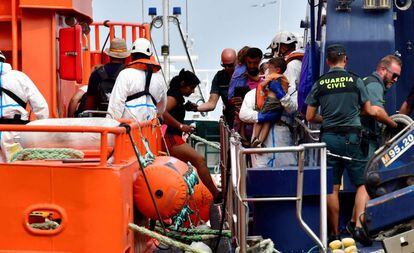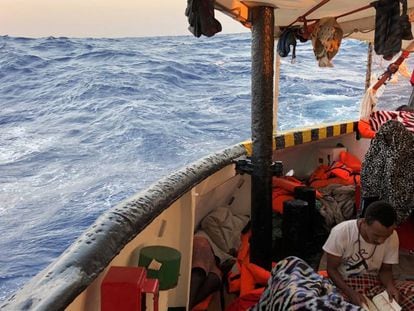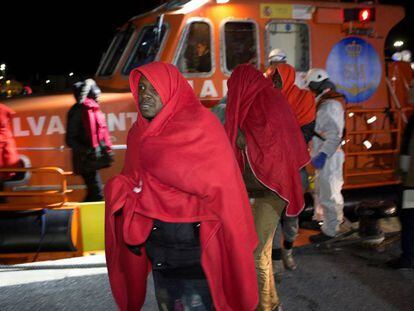Irregular migrant arrivals in Spain fall by 39%
Morocco has played a key role in curbing the flow of people, making it harder and more expensive to reach Spanish territory


It took Bara Nourdin, a young man from Burkina Faso, four months to get into Spain from Morocco. He first tried to jump over the fence separating Moroccan territory from the Spanish exclave city of Melilla in January, but failed. He made four unsuccessful attempts before clearing the fence on his fifth try, in April.
Paris views the southern European border as a gateway into France for irregular migrants
“Everything bad that happens in Morocco does not happen here: here I have a place to sleep, I am studying, and I am waiting for all of my siblings, who are in Nador and going through a hard time to make it [into Spain],” he says.
His is not an isolated experience: reaching Spain from Morocco has become harder, riskier and more expensive. The latest data on irregular migrant arrivals through this route, covering the present year to Tuesday of this week, shows a 39% drop compared with the same period in 2018, for a total of 18,018 people.
With financial and logistical backing from the EU and Spain, Morocco has deployed its security forces to contain the migratory pressure on Europe. The Spanish government of Pedro Sánchez has presented Morocco as a strategic partner in the fight against unauthorized immigration, and got Brussels to extend a €140 million check to that country in exchange for its assistance. Spain will add €30 million in support.
The 39% drop means that the Spanish government is coming closer to its goal of reducing irregular immigration by half in 2019. Last year, by comparison, the western Mediterranean route became the main gateway into Europe after Italy closed off access to its ports. As a result, there were 65,000 arrivals in Spain. These days, it is Greece that is seeing the highest arrival figures in the Mediterranean: 28,200 so far this year.

Morocco’s assistance has been essential to Spain’s ability to present itself to Brussels as the EU member who is doing the best job at controlling Europe’s southern border. Pressure from the EU has been increasing, and not everyone approved of Spain’s unilateral decision last year to take in the Aquarius, a migrant ship that had been refused entry by Malta and Italy. Paris, for instance, views the southern European border as a gateway into France. A recent study by the International Organization for Migration (IOM) showed that a little over half of the people arriving in Spain stay there; France is the second country of preference.
Rabat and Madrid have reactivated bilateral agreements that had been dropped, such as the one allowing for the quick return of migrants to Moroccan territory right after they jump the fences at Ceuta and Melilla. Moroccan security forces have also intensified the number of raids, forced transfers and deportations. Moroccan statistics, which the EU considers unreliable, show that Rabat has stopped 42,000 crossing attempts. The vast majority of would-be border crossers, 80%, hail from sub-Saharan Africa.
Everything bad that happens in Morocco does not happen here: here I have a place to sleep, I am studying, and I am waiting for all of my siblings
For the first time, Morocco has also become involved in maritime activities. All the operations that had been carried out by Spanish teams in Morocco’s search-and-rescue zone are now being handled by the Moroccan Royal Navy, which takes the rescued migrants back to their departure point. Official Moroccan government sources told EL PAÍS that 8,000 people have been rescued at sea.
The new dynamics have opened up new routes that are longer and more dangerous. “Migrants are increasingly departing from the western coast of Morocco, near the cities of Kenitra, Rabat, Skhirat and Casablanca. This leads to more accidents and more scams by the clandestine smuggling networks,” warns an internal report from Brussels that this newspaper has seen. To mid-August, 208 people have died or disappeared during the crossing to Spain, representing one out of every 100 people who attempt the journey, according to the IOM.
English version by Susana Urra.












































